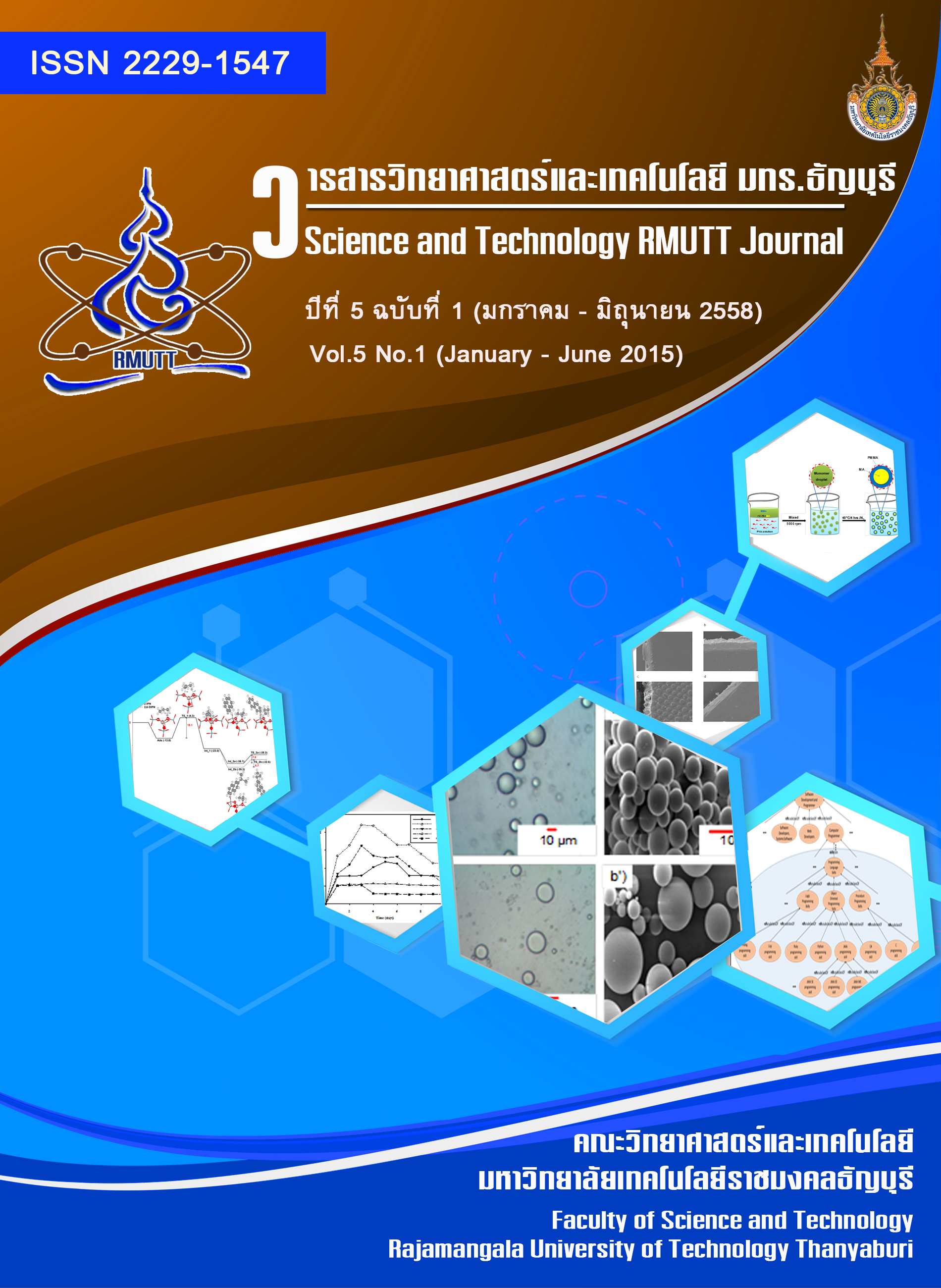The enhancement of efficiency in e-recruitment system using semantic matching technique
Main Article Content
Abstract
In the last ten years, global trend of the Internet access increasingly grows very fast. As a result, it significantly impacts on the changes of e-Recruitment process directly. However, finding the most suitable applicant is still very difficult and always challenges in a recruitment process. This research intends to study about the enhancement of efficiency in e-recruitment system using semantic matching technique. The Semantic Web technology, ontology knowledge base, and semantic matching technique are mainly used in this research in order to design the conceptual framework of the prototype system, design the prototype of ontology knowledge based, and improve the efficiency in matching process using the similarity and learning curve method. Moreover, Weight Sum Model (WSM) is also used to improve the efficiency in matching process. Finally, 10 sample data of applicants was tested on the proposed semantic matching, then the result expresses that the proposed semantic matching is more suitable than traditional terminological and similarity matching in case of distinguishing among applicants by calculated scores. The final scores from proposed semantic matching can nicely distinguish the differences among target applicants as well as the prototype system applying the Semantic Web technology can easily enable information sharing and reduce the duplicated information on the Internet because it is a standard. However, in future works, if we add more the good relationship of ontology or other factors, those can also enhance the efficiency in recruitment process to find more suitable person.
Article Details
References
Internet World Stats, "Internet Usage Statistics," [Online]. Available: http://www.internetworldstats.com/stats.htm. [Accessed 20 January 2015].
M. Sills, "E-recruitment: Comparison with traditional recruitment and the influences of social media," 2014.
S. Hussain, A. Mushtaque, H. Dhiman, Nida and S. N. Shivhare, "Approaches used for Ontology Matching in eRecruitment," International Journal For Research in Applied Science and Engineering Technology (IJRASET), vol. 51, pp. 39-45, 2014.
The University of Sheffield, "Human Resources," [Online]. Available: http://www.shef.ac.uk/hr/recruitment/erecruitment/atr. [Accessed 20 December 2014].
M. Awang, N. R. Khan and M. A. Ghouri, "Impact of E-Recruitment and Job-Seekers Perception on Intention to Pursue the Jobs," Management & Marketing, vol. 11, no. 1, pp. 47-57, 2013.
P. Hitzler, M. Krotzsch and S. Rudolph, Foundations of Semantic Web Technologies, CRC Press, 2009.
T. Berners-Lee, J. Hendler and O. Lassila, "The Semantic Web," Scientific American Magazine, 2001.
W3Schools, "Semantic Web Tutorial," 2010. [Online]. Available: http://w3schools.com/semweb/default.asp. [Accessed 9 May 2014].
A. Medic and A. Golubovic, "Making secure Semantic Web," Universal Journal of Computer Science and Engineering Technology, pp. 99-104, 2010.
W3C Member, "Resource Description Framework," 15 March 2014. [Online]. Available: http://www.w3.org/RDF/. [Accessed 23 August 2014].
W3C Member, "Web Ontology Language," 11 December 2012. [Online]. Available: http://www.w3.org/2001/sw/wiki/OWL. [Accessed 23 August 2014].
C. Bizer, R. Heese, M. Mochol, R. Oldakowski, R. Tolksdorf and R. Eckstein, "The Impact of Semantic Web Technologies on Job Recruitment Processes," in Proceedings of the 7th International Conference Wirtschaftsinformatik, Berlin, 2005.
P. Nilaphruek, "A Job Recruitment System Using Semantic Web Technology," in The 15th International Conference of International Academy of Physical Sciences Dec 9 - 13, Pathumthani, Thailand, 2012.
H. Lv and B. Zhu, "Skill ontology-based semantic model and its matching algorithm," in 7th International Conference on Computer-Aided Industrial Design and Conceptual Design, 2006, Hangzhou, 2006.
M. V. Coillie, "Europortfolio Europass CV HR-XML Application Profile," 2010.
UNESCO, "International Standard Classification of Education," UNESCO-UIS, 2006.
International Labour Organization, "International Standard Classification of Occupations," 18 September 2004. [Online]. Available: http://www.ilo.org/public/english/bureau/stat/isco/isco88/index.htm. [Accessed 12 November 2014].
Eurostat, “Statistical classification of economic activities in the European Community,” Office for Official Publications of the European Communities, Luxembourg, 2008.
T. B. Lee, "HM Government," Opening up Government, 2009. [Online]. Available: http://data.gov.uk/linked-data. [Accessed 14 December 2014].
H. Paulheim and S. Hertling, "Discoverability of SPARQL Endpoints in Linked Open Data," in The 12th International Semantic Web Conference and the 1st Australasian Semantic Web Conference, Sydney, Australia, 2013.
United States Agency for International Development, Overview of Job Classifications and Certifications in the IT Sector, USAID, 2006.
J. Zhong, H. Zhu, J. Li and Y. Yu, "Conceptual Graph Matching for Semantic Search," in 10th International Conference on Conceptual Structures, ICCS 2002, Proceedings, Borovets, 2002.
"C Programming and C++ Programming," CProgramming, 2011. [Online]. Available: http://www.cprogramming.com/. [Accessed 3 January 2015].
E. Triantaphyllou, "Multi-Criteria Decision Making: A Comparative Study," The Netherlands: Kluwer Academic Publishers (now Springer), p. 320, 2000.
T. R. Gruber, "A Translation Approach to Portable Ontology Specifications," Knowledge Acquisition 5, pp. 199-220, 1993.
F. Arvidsson and A. Flycht-Eriksson, "Ontologies I," 2008.


